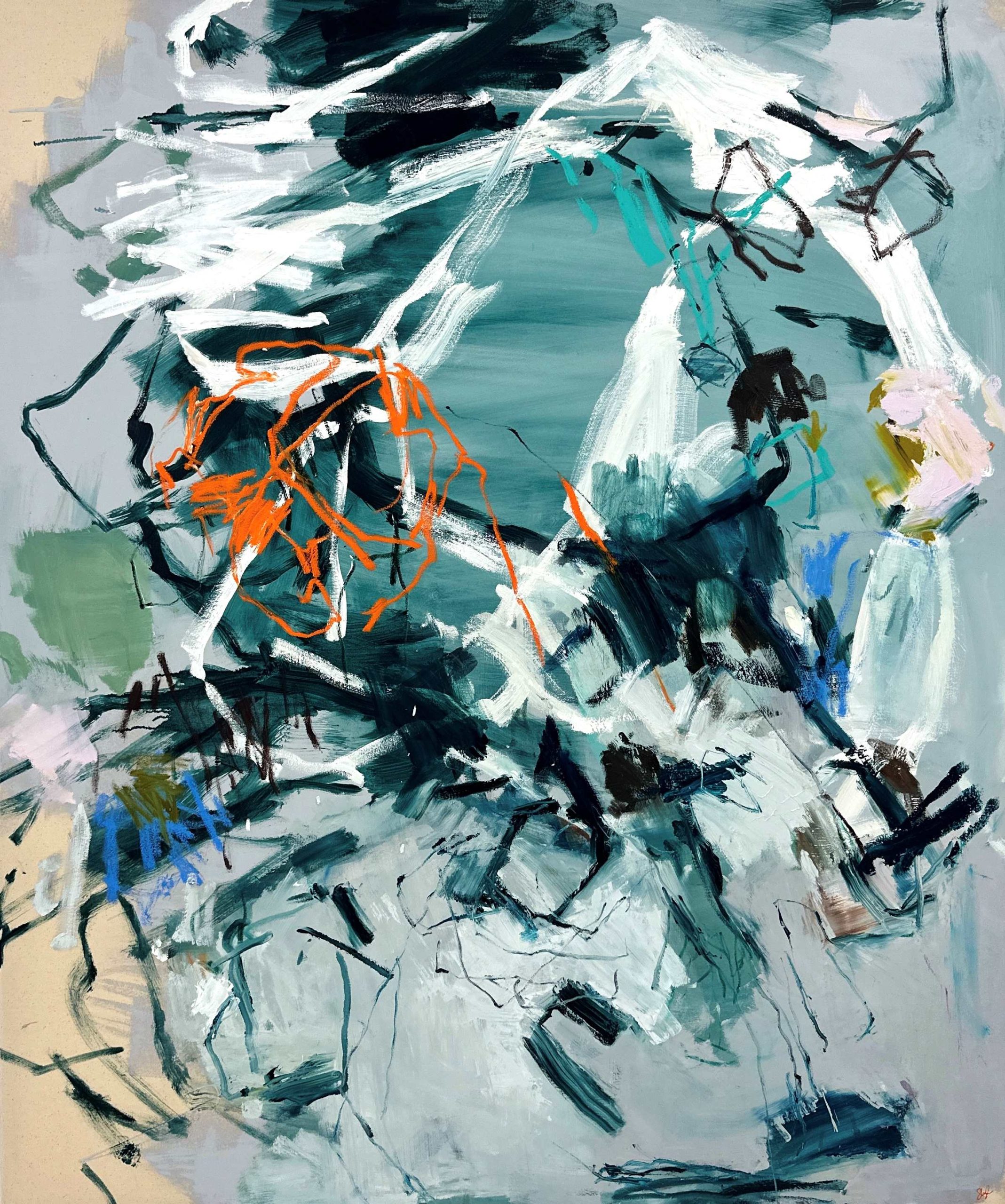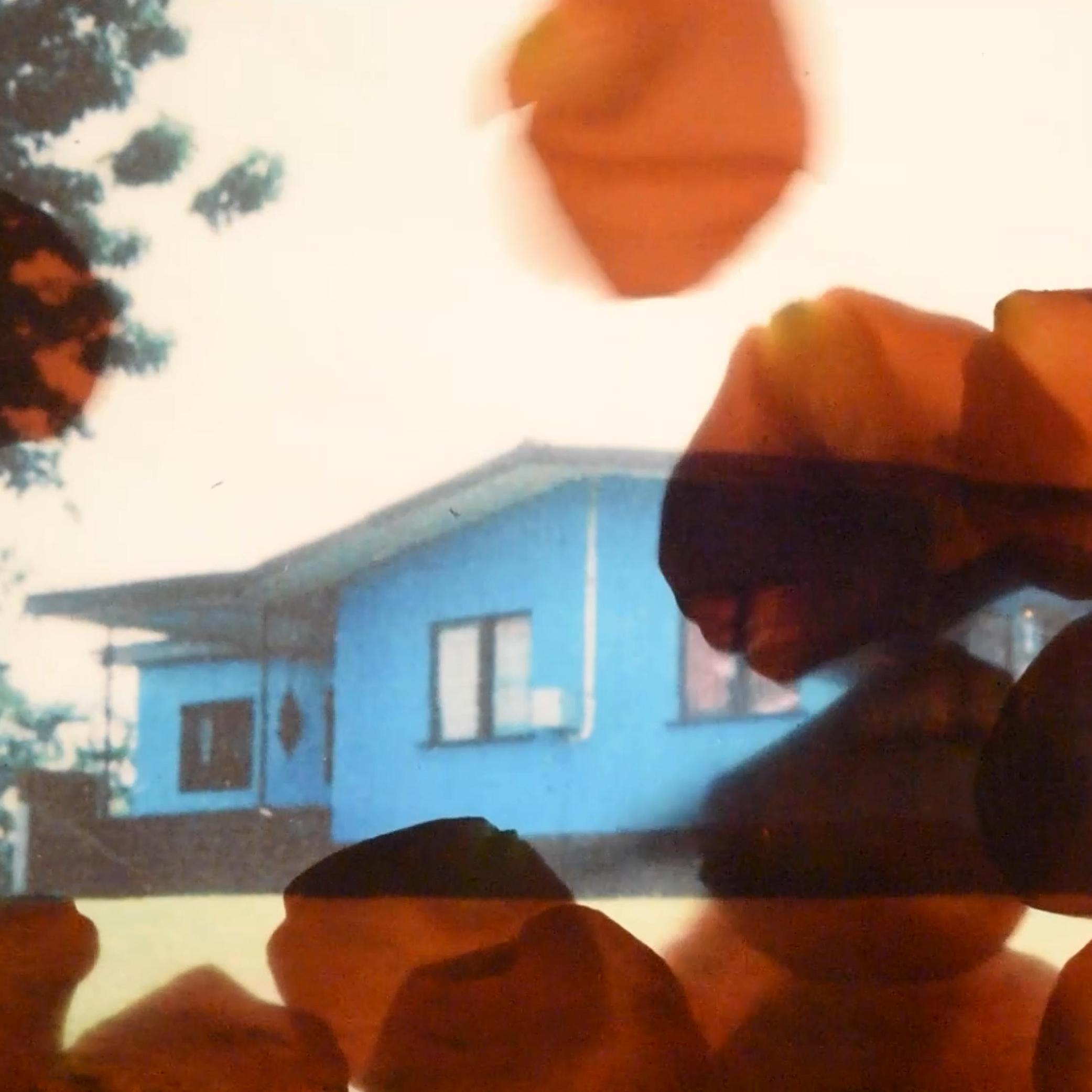

Llewellyn Skye, About Yesterday. Oil, acrylic and oil stick on canvas, 180 x 150cm. Courtesy: the artist and Wagner Contemporary, Sydney.
Wagner Contemporary presents work by Llewellyn Skye at Sydney Contemporary.
“Skye’s paintings hover in a liminal space, on the edge of legibility. “I like the idea that you think it’s a flower, but then also question whether it is one” she observes. “The flower is a starting point that becomes more abstract as I go along.” This is part of the paradox that lies at the heart of each of her paintings, which start in a ordered manner, before this order is unapologetically undone. “First, I find the composition and then I start messing it up. It’s all about intuition and the feel of it.” Skye explains. “I’m interested in those little moments of shift in life and trying to capture that beauty in decay.” Optically, there is something of Joan Mitchell’s frenetic brush in Skye’s canvases; yet there is also some of the existential weight of the 17th-century Dutch still-life painters, who subtly suggested the transience of life with the slightest oxidation of a painted leaf. Skye’s paintings are spaces where such opposites—structure and chaos; abstraction and representation—collide and become suspended in state of productive tension.
This is no accident. Indeed, one gets the sense that Skye is always actively searching for this very tension with her brush. “The moment that I think that there is something not quite right, in the painting, that’s when I like to leave it,” Skye explains. “The minute that I go past that point is when I’ve ruined it.” There is something both perplexing and intriguing in these words. Where other artists might seek to resolve their work at this point, and smooth out its aesthetic provocations, Skye sits with them and affords them time. “I don’t like perfection in my work,” she confesses to me. “I want there to be questions still in the painting. I like to let mistakes shine through and let them breathe.” Her paintings are not taxidermied records, but living, breathing, things.
There is a part of the artist written into each of her canvases. One can find both the history of Skye’s brush and the artist herself moving across the large expanse of each painting. “I work best large. I feel like when its large I can move,” she reflects. “Because I’m always moving as I paint, using my whole body.” In this sense, her painted marks capture not only the form of the flower, but also the presence of the artist.
Of course, there is another history that also finds expression here: Skye’s training not only as a painter, but also as a sculptor. “Form is so drilled into me that I’m always thinking in the round,” Skye explains. “There are no straight lines in my work—I don’t do straight lines.” Instead, the artist imbues a three-dimensional weight and gravity within the two-dimensional boundaries of the canvas, yoking the two mediums together. As with the rest of her practice, Skye is more interested in following the pull of her intuition than conforming to artistic orthodoxies. I ask, “what is a typical painting sessions like?” She pauses, before replying: “nothing’s ever typical for me. I’m always just looking for new moments with each of my paintings.” – Tai Mitsuji, 2023.
Follow this artist
Sign up to receive the latest updates on this artist including exhibitions, VIP previews, landmark events, news and milestones.



